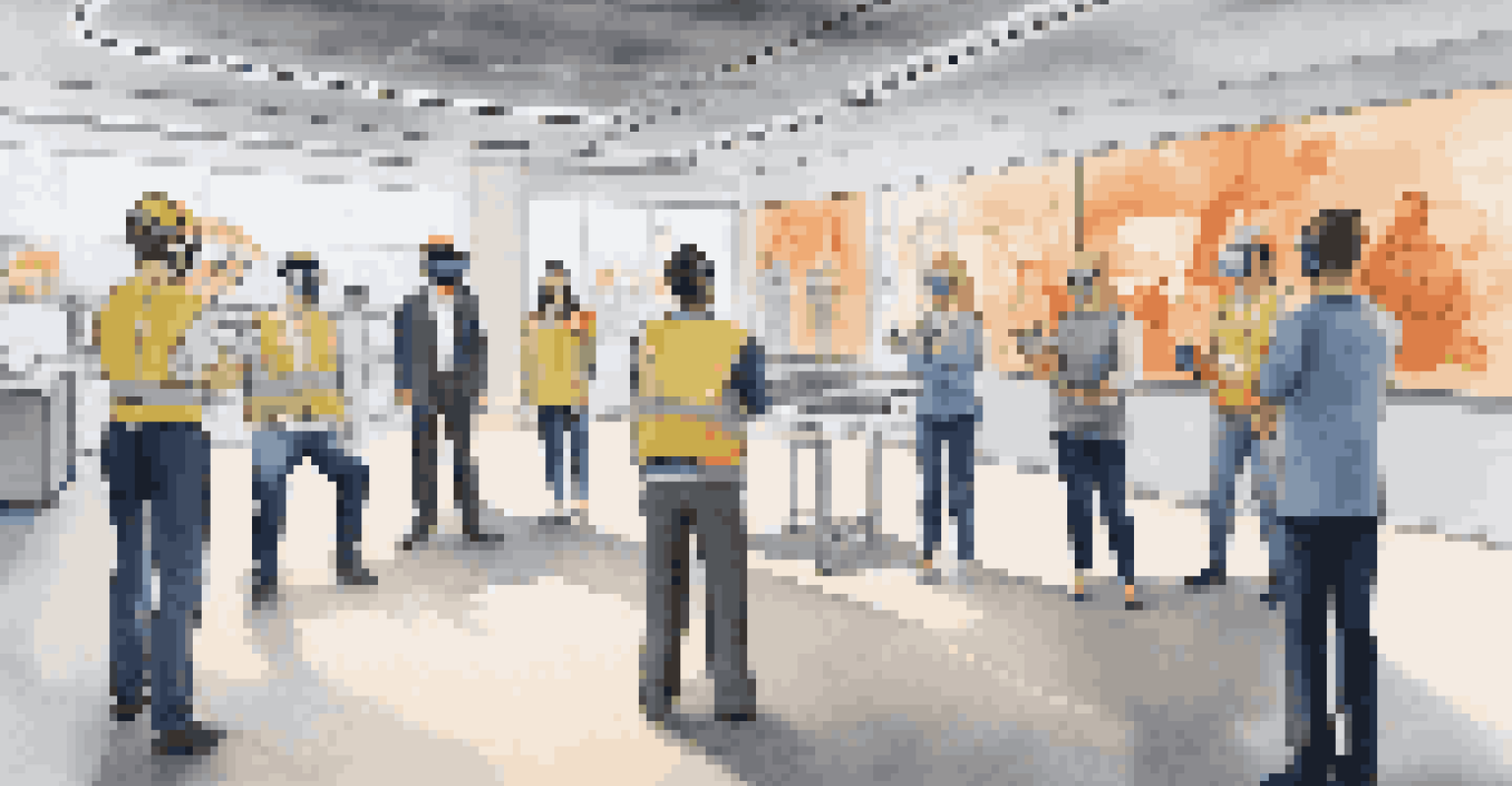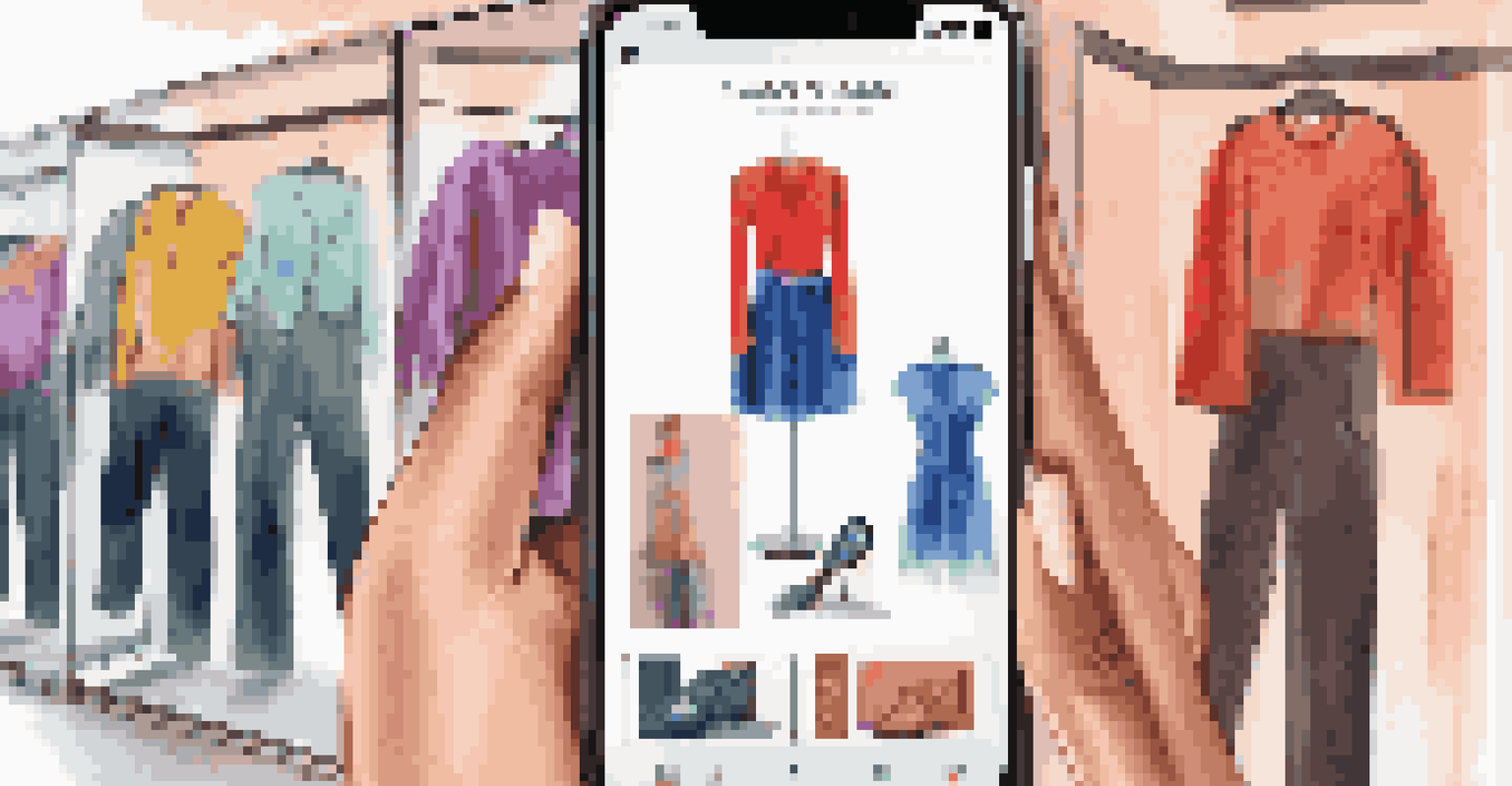AR Technology: A Tool for Retail Crisis Management

Understanding AR Technology in Retail Context
Augmented Reality (AR) has emerged as a powerful tool in various industries, including retail. At its core, AR superimposes digital information onto the real world, allowing customers to interact with products in innovative ways. Imagine trying on clothes virtually or seeing how a piece of furniture would look in your living room without leaving your home—this is the magic of AR.
Augmented reality is not just a technology; it's a new way of seeing the world and experiencing the products we love.
In retail, AR not only enhances the shopping experience but also serves as a strategic asset during crises. Whether dealing with supply chain disruptions or sudden spikes in demand, AR can provide retailers with the agility needed to navigate challenges effectively. By offering real-time data and immersive experiences, AR helps retailers maintain customer engagement even when traditional methods falter.
As we delve deeper into the potential of AR technology, it's essential to understand its role in both enhancing customer experiences and equipping retailers with the tools to manage unexpected crises. This dual functionality makes AR a game-changer in today's fast-paced retail landscape.
Enhancing Customer Engagement Through AR
Customer engagement is vital for retail success, especially during a crisis when consumer behavior shifts. AR technology can bridge the gap between physical and digital shopping experiences, captivating customers' attention and keeping them informed. For instance, retailers can use AR apps to showcase product features or tutorials, helping customers make informed decisions even from home.

During challenging times, maintaining a connection with customers becomes paramount. AR experiences can offer personalized recommendations based on individual preferences, ensuring that retailers remain relevant and engaged. This level of interaction not only fosters loyalty but also encourages customers to explore new products they might not have considered otherwise.
AR Enhances Retail Customer Experience
Augmented Reality (AR) transforms shopping by allowing customers to virtually try products and engage with brands, even during crises.
In essence, AR serves as a dynamic platform for retailers to engage with customers, turning potential crises into opportunities for deeper brand connections. By leveraging this technology, retailers can create memorable experiences that resonate with consumers, even in uncertain times.
Streamlining Inventory Management with AR
Inventory management can become chaotic during a retail crisis, often leading to stockouts or excess inventory. AR technology can revolutionize this process by providing real-time insights into stock levels and product locations. For example, AR-enabled devices can guide employees through warehouses, showing them where to find items quickly and efficiently.
In today's retail landscape, adapting to change is key, and AR offers innovative solutions to engage customers and streamline operations.
Moreover, AR can help retailers visualize data by overlaying analytics directly onto their inventory displays. This allows for quicker decision-making regarding restocking or reallocating products based on demand trends. By ensuring that the right products are available at the right time, retailers can reduce unnecessary losses during tumultuous periods.
In summary, AR technology not only enhances the shopping experience but also plays a crucial role in streamlining inventory management. By integrating AR into their operations, retailers can respond more effectively to crises, ensuring that they meet customer needs even when challenges arise.
Training Employees for Crisis Situations Using AR
One of the biggest challenges during a retail crisis is ensuring that employees are well-prepared to handle unexpected situations. AR technology can facilitate immersive training experiences that enhance employee readiness. For instance, through AR simulations, employees can practice responding to various crisis scenarios in a controlled environment without the pressure of real-life consequences.
This hands-on approach to training not only boosts confidence but also equips employees with the skills necessary to act decisively when crises occur. With AR, retailers can create tailored training programs that address specific challenges unique to their operations, ensuring that all staff members are on the same page.
AR Streamlines Inventory Management
AR technology provides real-time insights into stock levels and product locations, helping retailers manage inventory efficiently during challenging times.
In essence, AR technology transforms employee training into an engaging and effective process. By investing in AR-driven training tools, retailers can cultivate a more responsive and agile workforce, ready to tackle any crisis head-on.
Improving Communication During Retail Crises with AR
Effective communication is vital for managing any crisis in retail. AR technology can enhance communication between teams by providing visual aids that clarify complex information. For example, during a crisis, managers can use AR to overlay important updates or instructions directly onto physical environments, ensuring that all team members are informed and aligned.
Additionally, AR can facilitate remote collaboration, allowing teams to connect and share information in real-time regardless of location. This is particularly beneficial during times when in-person meetings are not feasible. By using AR tools, employees can visualize problems and solutions together, fostering a collaborative spirit even in challenging circumstances.
Ultimately, AR technology empowers retailers to communicate more effectively during crises. By utilizing these tools, organizations can ensure that everyone is informed and working towards the same goals, leading to more effective crisis management.
Case Studies: Retailers Successfully Using AR in Crises
Several retailers have already begun to embrace AR technology as a means of crisis management, showcasing its effectiveness in real-world situations. For instance, a popular furniture retailer utilized AR to display how its products would fit into customers' homes during a sudden increase in online orders. This approach not only reduced returns but also helped customers feel more confident in their purchases.
Another example is a leading fashion brand that implemented AR for virtual try-ons during a temporary store closure. By allowing customers to try on clothes virtually, the brand maintained sales momentum and customer engagement despite physical limitations. This innovative solution proved invaluable during a challenging retail environment.
AR Improves Employee Training
Using AR for training enables employees to practice crisis scenarios in a safe environment, ensuring they are better prepared for real-life challenges.
These case studies highlight the power of AR technology in navigating retail crises. As more retailers recognize its potential, we can expect to see a growing trend of AR integration in crisis management strategies, paving the way for a more resilient retail landscape.
The Future of AR in Retail Crisis Management
As technology continues to evolve, the future of AR in retail crisis management looks promising. Innovations in AR applications and devices will likely enhance their capabilities, making them even more effective for retailers facing unexpected challenges. For example, advancements in artificial intelligence could allow AR systems to predict potential crises based on consumer behavior and market trends.
Moreover, as more consumers become accustomed to AR experiences, retailers will have an opportunity to further integrate these technologies into their overall strategies. This could lead to more personalized shopping experiences, better crisis preparedness, and ultimately, increased customer loyalty.

In conclusion, the future of AR in retail crisis management is not just about solving immediate problems but also about creating a more resilient and adaptable retail environment. Embracing these technologies will empower retailers to thrive in an ever-changing market.